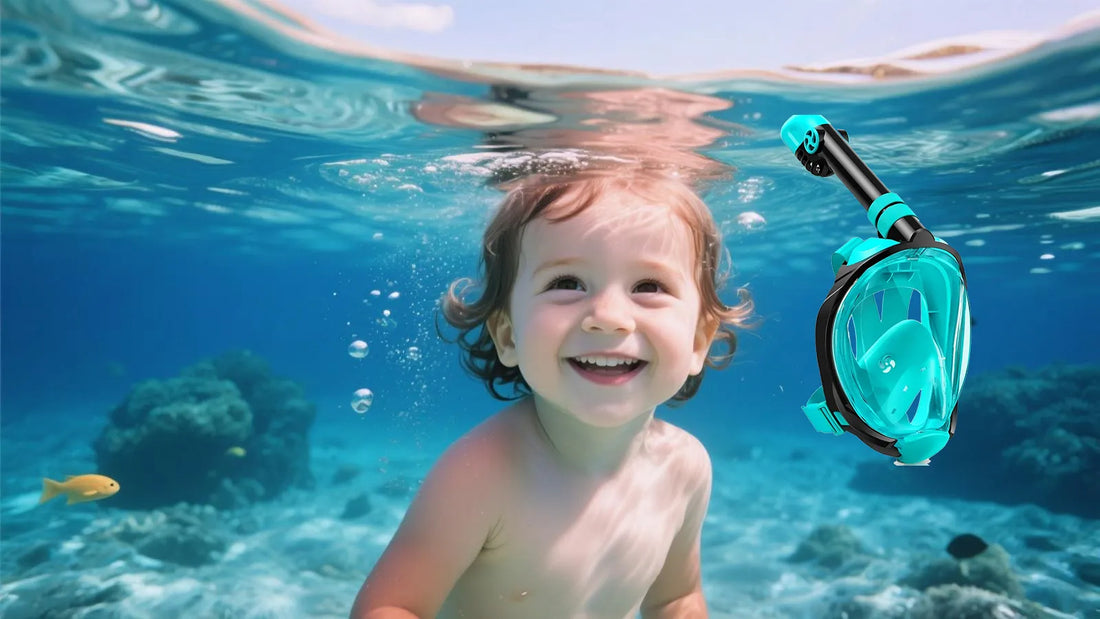Scuba diving is an exhilarating experience that allows you to explore the underwater world, but achieving the perfect buoyancy is crucial for a safe and enjoyable dive. One of the most common questions among divers is, 'How much weight for scuba diving?' The answer isn't straightforward, as it depends on various factors. This guide will walk you through everything you need to know to determine the right amount of weight for your dives.
Understanding Buoyancy and Weight
Buoyancy is the force that allows objects to float or sink in water. In scuba diving, achieving neutral buoyancy means you neither sink nor float, allowing you to hover effortlessly underwater. The amount of weight you carry plays a significant role in achieving this balance. Too much weight can make you sink too quickly, while too little can make it difficult to descend or stay submerged.
Factors Influencing the Amount of Weight Needed
Several factors influence how much weight you need for scuba diving. These include your body composition, the type of wetsuit you're wearing, the equipment you're using, and the salinity of the water. Let's delve into each of these factors in detail.
Body Composition
Your body composition, including your weight, muscle mass, and fat percentage, affects your buoyancy. Generally, individuals with more body fat tend to be more buoyant and may require additional weight to achieve neutral buoyancy. Conversely, those with more muscle mass may need less weight.
Type of Wetsuit
The thickness and material of your wetsuit also impact your buoyancy. Thicker wetsuits provide more insulation but also increase buoyancy, requiring more weight to counteract it. Neoprene, the material commonly used in wetsuits, is naturally buoyant, so divers wearing thicker neoprene suits will need more weight.
Equipment
The type of scuba equipment you use can influence the amount of weight you need. For example, aluminum tanks are more buoyant than steel tanks, so divers using aluminum tanks may require additional weight. Similarly, the size and style of your buoyancy control device (BCD) can also affect your buoyancy.
Water Salinity
Saltwater is denser than freshwater, providing more buoyancy. As a result, divers in saltwater environments typically need more weight than those diving in freshwater. The salinity of the water can vary depending on the location, so it's essential to adjust your weight accordingly.
How to Determine the Right Amount of Weight
Now that you understand the factors influencing the amount of weight needed, let's discuss how to determine the right amount for your dives. Here are some practical steps to help you find the perfect balance.
Start with a Baseline
As a general rule of thumb, divers typically start with a baseline of 10% of their body weight in pounds. For example, if you weigh 150 pounds, you might start with 15 pounds of weight. However, this is just a starting point, and you may need to adjust based on the factors mentioned earlier.
Perform a Buoyancy Check
Before your dive, perform a buoyancy check to ensure you have the right amount of weight. Here's how to do it:
- Enter the water with all your gear on.
- Hold your breath and float at the surface.
- Exhale and see if you begin to descend slowly.
- If you don't descend, add a small amount of weight and repeat the process.
- If you sink too quickly, remove some weight and try again.
Adjust During the Dive
Even after performing a buoyancy check, you may need to make adjustments during your dive. Pay attention to your buoyancy and make small changes as needed. Remember, it's better to start with slightly less weight and add more if necessary, rather than starting with too much weight and struggling to ascend.
Common Mistakes to Avoid
When determining how much weight for scuba diving, there are some common mistakes that divers make. Avoiding these mistakes can help ensure a safer and more enjoyable dive.
Overweighting
Carrying too much weight can make it difficult to control your buoyancy and increase the risk of rapid descents, which can be dangerous. Overweighting also puts unnecessary strain on your body and can lead to fatigue.
Underweighting
On the other hand, carrying too little weight can make it challenging to descend and stay submerged. This can lead to increased air consumption as you struggle to maintain your depth, reducing the overall enjoyment of your dive.
Ignoring Environmental Factors
Failing to consider environmental factors such as water salinity and temperature can result in improper weighting. Always take these factors into account when determining the amount of weight you need.
Tips for Achieving Perfect Buoyancy
Perfect buoyancy is the key to a successful dive. Here are some tips to help you achieve and maintain it.
Practice Regularly
The more you dive, the better you'll become at controlling your buoyancy. Regular practice will help you develop a feel for the right amount of weight and how to adjust it as needed.
Use Proper Breathing Techniques
Your breathing plays a significant role in buoyancy control. Practice slow, deep breaths to help maintain a stable depth. Avoid rapid, shallow breathing, as it can cause you to rise and fall unpredictably.
Fine-Tune Your Equipment
Ensure your equipment is properly fitted and adjusted. A well-fitted wetsuit and BCD can make a big difference in your buoyancy control. Make sure your weight belt or integrated weight system is secure and easy to adjust.
Stay Relaxed
Tension and stress can affect your buoyancy. Stay relaxed and focused during your dive, and avoid making sudden movements that can disrupt your balance.
Final Thoughts
Determining how much weight for scuba diving is a critical aspect of dive preparation. By understanding the factors that influence buoyancy and following the steps outlined in this guide, you can find the right amount of weight for your dives. Remember, achieving perfect buoyancy takes practice, so don't be discouraged if it doesn't come naturally at first. With time and experience, you'll develop the skills needed to enjoy safe, comfortable, and unforgettable underwater adventures.

